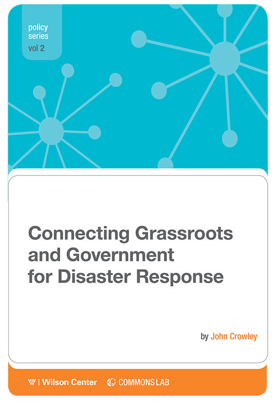Connecting Grassroots to Government Report

Leaders in disaster response are facing the need to adapt to a new reality. Collective action from the grassroots has changed crisis response operations in ways that few would have predicted even five years ago. The era when citizens listened passively to official announcements made by radio and television has ended. Today, they can exchange information over mobile phones and social media and then mobilize thousands of people to collect, analyze, and act on that information. Sometimes, community-sourced intelligence may be fresher and more accurate than the information given to the responders who arrive to provide aid.
Federal agencies have taken notice of this newfound capacity. Over the past two years, a series of events caused several agencies to explore how to engage these citizen-driven efforts and fashion them into new partners in agency response operations. With the help of the Woodrow Wilson International Center for Scholars Science and Technology Innovation Program, I have been able to spend many months talking with officials from US federal agencies as well as representatives from the crisis mapping community. I’ve deployed with FEMA to Superstorm Sandy, experimenting on new ways to connect the crowd into response operations. And we’ve put out the final draft of the report.
With many, many thanks to Lea Shanley for her tireless (often invisible) work and Dave Rejeski for his patience on the production of this document.
##Connecting Grassroots to Government: Final
![]() Download PDF
Download PDF
Please email your comments to bostoncello {at} the Big G.
John